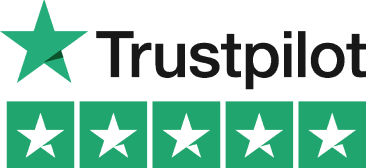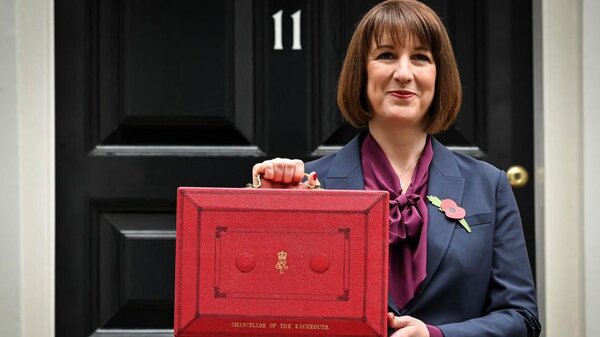Let’s Break This Down Together...
Heard of SEIS but not sure how it works or why it matters?
The Seed Enterprise Investment Scheme offers huge tax perks, like 50% income tax relief and tax-free gains, for backing early-stage UK startups.
It sounds great (and it is), but the rules can be tricky. Don’t worry, we’ll walk you through everything you need to know, step by step. Let’s dive in!
What is the Seed Enterprise Investment Scheme (SEIS) and why should you care?
SEIS (Seed Enterprise Investment Scheme) offers some of the most generous tax breaks available in the UK tax system. Launched in 2012, it’s designed to help early-stage companies raise money.
For investors, you can claim back up to 50% of your investment against your income tax bill. Invest £10,000 in a qualifying startup, and you could reduce your tax bill by £5,000.
Hold your SEIS shares for at least three years, and any profit you make when you sell them is completely free from Capital Gains Tax. This is a form of capital gains tax relief available to SEIS investors, allowing you to reduce or eliminate your capital gains tax liability when reinvesting gains into qualifying investments.
If things don’t work out, you can claim loss relief against your income tax or capital gains tax. This softens the blow of a failed investment considerably.
The scheme is deliberately generous because early-stage investing is risky, and there must be a genuine risk to the investor's capital for the investment to qualify for SEIS tax relief.
SEIS offers investors a combination of income tax relief, capital gains tax relief, and loss relief, making it an attractive option for those looking to invest in new companies while mitigating risk.
How SEIS tax relief works
The magic of SEIS lies in its simplicity. You invest up to £100,000 in a qualifying early-stage company and receive 50% back as income tax relief.
Let’s say you invest £20,000 in a promising startup. You’ll be eligible to claim £10,000 back against your income tax bill for that year (or the previous year). To claim tax relief, you must do so through your Self Assessment, and the relief is calculated based on the money invested.
If the company succeeds and your shares triple in value to £60,000 after three years, you can sell them tax-free. Your net cost was just £10,000, but you’ve made £50,000.
There’s also ‘reinvestment relief’ that lets you avoid Capital Gains Tax on other assets. Simply reinvest the proceeds into SEIS shares to qualify.
While you can carry back relief to the previous tax year, unused income tax relief cannot be carried forward to future tax years, so it’s important to claim within the relevant period.
The scheme is deliberately generous because early-stage investing is risky. The government wants to encourage more people to back British innovation.

Who qualifies for SEIS?
For a SEIS qualifying company to qualify, it must be UK-based with a permanent establishment in the UK. It should have been trading for less than 2 years.
It must have fewer than 25 employees and gross assets not exceeding £350,000. The company must be conducting a qualifying trade, with many activities like property development excluded.
A SEIS qualifying company can raise no more than £150,000 in total under SEIS. This cap ensures the scheme targets genuinely small, early-stage businesses.
For investors, you must be a UK taxpayer and can’t be an employee of the company. Directors can qualify under specific conditions: unpaid directors are generally eligible to claim relief, while a paid director can only claim relief if their payments are permitted under the scheme’s rules.
You can’t hold a substantial interest, meaning 30% or more, of the company’s shares or voting rights, and must hold them for at least 3 years. Only new, full risk ordinary shares qualify for SEIS relief. These shares must not be redeemable and must not carry special rights to the company's assets in the event of liquidation. Existing shares do not qualify.
The rules are strict because these tax advantages are significant. HMRC doesn’t want people using SEIS as a tax loophole.
Note: Knowledge intensive companies may have different rules or higher investment limits under related schemes such as EIS and VCT.
How to claim SEIS tax relief
Getting SEIS relief isn’t complicated, but you need to follow the proper steps. The process begins before you even invest.
First, the SEIS company should apply for ‘advance assurance’ from HMRC before issuing shares. This gives investors confidence that the investment will qualify.
After you’ve invested, the SEIS company will send you an SEIS3 certificate. This typically arrives within a few months and is essential for claiming the relief.
The SEIS3 certificate includes a unique investment reference number, which you must provide when claiming SEIS tax relief.
You claim the relief through your Self Assessment tax return. If you’ve already paid your tax for the year, HMRC will adjust your tax code or issue a refund.
You can even carry back the relief to the previous tax year. This is particularly useful if you’ve already used up your current year’s tax allowances. However, SEIS relief cannot be carried forward to future tax years, so you must claim it for the relevant tax year only.
I once helped a friend claim SEIS relief on a £15,000 investment he’d forgotten about. The £7,500 tax refund arrived just as he was saving for his wedding – perfect timing!
Remember to keep all your paperwork safe. HMRC might ask to see it during routine checks.

Disposal Relief: What Happens When You Sell?
When it comes time to sell your SEIS shares, disposal relief can provide a significant tax benefit.
If you’ve held your SEIS shares for at least three years, you won’t have to pay any capital gains tax on the profits from the sale, this is known as disposal relief.
It’s one of the main reasons why the Seed Enterprise Investment Scheme is so attractive to investors looking to maximise their returns and minimise their tax bill.
However, timing is crucial. If you sell your SEIS shares before the three-year holding period is up, you may lose the capital gains tax exemption and could be required to pay capital gains tax on any profits.
Additionally, if you’ve claimed income tax relief on your original investment, selling early could mean you have to repay some or all of the tax relief you received.
For those who have claimed income tax relief and held their shares for the required period, disposal relief ensures that your investment gains remain tax-free.
Understanding these rules is essential for making the most of your SEIS investment and ensuring you benefit from all the tax reliefs available.
Always keep track of your investment dates and paperwork to make claiming disposal relief as smooth as possible.
SEIS vs EIS: What's the difference?
SEIS has a big brother called EIS (Enterprise Investment Scheme). They’re similar but designed for companies at different stages of growth.
SEIS is for very early-stage companies, offering more generous tax relief at 50%. EIS provides 30% relief but with higher investment limits of £1 million per year.
Companies can only raise £150,000 under SEIS, while EIS allows up to £5 million annually. There’s also a £12 million lifetime limit for EIS funding.
Many companies start with SEIS funding and then move to EIS as they grow. Previous investments made under SEIS can impact a company's eligibility and the benefits available when transitioning to EIS, so it’s important for both companies and investors to track these investments carefully. It’s a natural progression that experienced investors understand well.
Investors can also access SEIS through SEIS funds, which pool money into a range of qualifying companies, making it easier to diversify and comply with SEIS eligibility criteria.
The higher tax relief under SEIS reflects the higher risk of investing in very young companies. It’s the government’s way of encouraging true seed investment.
Additionally, both SEIS and EIS investments can offer inheritance tax relief after a qualifying holding period, making them attractive for estate planning and tax-efficient inheritance transfer.

Common pitfalls to avoid with SEIS
The biggest mistake companies make is not getting advance assurance before issuing shares. This can lead to nasty surprises if HMRC later rejects the application.
Investors sometimes forget about the three-year holding period. Sell too early, and HMRC will claw back that tax relief you claimed.
For example, even if the value of the same investment remains unchanged after three years, selling before the holding period ends can trigger a loss of relief and different tax consequences.
Misunderstanding the connection rules is another common error. If you’re too closely connected to the company, you won’t qualify for relief.
Companies sometimes issue SEIS shares before actually receiving the money from investors. HMRC considers this improper and may disallow claims. SEIS relief is specifically designed to compensate for the risk capital that investors put at stake in early-stage companies.
Missing deadlines for submitting the compliance statement (SEIS1) to HMRC can jeopardise the arrangement. Companies have three years to do this, but earlier is better. Remember, capital gains tax (CGT) applies to profits from selling shares, but SEIS can provide relief from CGT in qualifying cases.
SEIS FAQs
Q: What is the maximum amount I can invest under SEIS per tax year?A: You can invest up to £200,000 in SEIS-qualifying companies each tax year. This maximum figure allows you to claim generous tax reliefs on a substantial amount of investment, making it easier to support multiple small businesses.
Q: How do I claim income tax relief under SEIS?A: To claim income tax relief, you need to have a sufficient income tax liability and hold your SEIS shares for at least three years. You can claim income tax relief on your Self Assessment tax return, which will reduce your income tax bill for the same tax year or the previous tax year if you choose to carry back the relief.
Q: What is the difference between SEIS and EIS?A: Both the Seed Enterprise Investment Scheme (SEIS) and the Enterprise Investment Scheme (EIS) are venture capital schemes designed to encourage investment in small businesses. SEIS targets very early-stage companies and offers more generous tax reliefs, including 50% income tax relief and full capital gains tax exemption. EIS is aimed at larger, more established companies and provides 30% income tax relief with higher investment limits.
Q: Can I claim loss relief under SEIS?A: Yes, if your SEIS shares are sold at a loss, you can claim loss relief against your income tax or capital gains tax. This can help reduce your tax bill in the tax year you sell the shares or even the previous tax year, making SEIS investments less risky.
Q: How do I know if a company is SEIS-qualifying?A: To check if a company is SEIS-qualifying, look for information on the company’s website or ask the company directly. You can also confirm the company’s SEIS status with HMRC. Only investments in SEIS qualifying companies are eligible for all the tax reliefs.
Q: Can I invest in SEIS through a venture capital trust?A: Yes, you can invest in SEIS through a venture capital trust (VCT). VCTs invest in a range of qualifying companies, allowing you to diversify your investments and benefit from the tax advantages of SEIS and other venture capital schemes.
Q: What are the tax advantages of investing in SEIS?A: SEIS offers a range of tax benefits, including 50% income tax relief, capital gains tax exemption, reinvestment relief, and loss relief. These generous tax reliefs can significantly reduce your overall tax liability and make investing in small businesses more attractive.
Q: How do I claim SEIS tax relief?A: To claim SEIS tax relief, complete your Self Assessment tax return and include details of your SEIS investment, such as the amount invested and the date of investment. You’ll need your SEIS3 certificate from the company. You can claim SEIS tax relief up to five years after the 31 January following the end of the tax year in which you made the investment, giving you plenty of time to claim relief on your investments.

Quick and Easy Guide to Adding SEIS Tax Relief in the Pie App
Follow these easy steps to ensure your tax reliefs are accurately recorded for your self-assessment:
To add SEIS tax relief, simply tap ‘Quick Add’ on the home screen of the Pie Tax App. From there, select ‘Add Tax Relief’, then choose ‘Tax Relief Investment Schemes’.Step 1

Next, select the specific investment relief you want to claim. Enter the name of the investment, the amount, and the date the investment was completed.Step 2

Final Thoughts
SEIS tax relief is one of the most investor-friendly schemes in the world. For those willing to support British innovation, it offers remarkable tax advantages.
For founders, understanding SEIS can be the difference between securing crucial seed funding or struggling. Many startups find it opens doors to angel investors.
The scheme has helped thousands of companies raise essential early funding. It's been particularly valuable in the tech and life sciences sectors.
Always consult with a qualified tax advisor before diving into SEIS investments. The rules are specific, and getting expert guidance can save headaches later.
Pie: Simplifying SEIS Tax Relief
Keeping track of your SEIS investments shouldn't give you a headache. The UK's first personal tax app makes it simple to monitor how these investments affect your overall tax position.
Our dashboard shows you in real-time how much tax relief you're entitled to claim from your SEIS investments.
Documentation is crucial with SEIS, and we help you keep everything organised and accessible. No more hunting through emails for that important SEIS3 certificate!
Take a look at Pie if you'd like to see how we can make your SEIS journey smoother.












